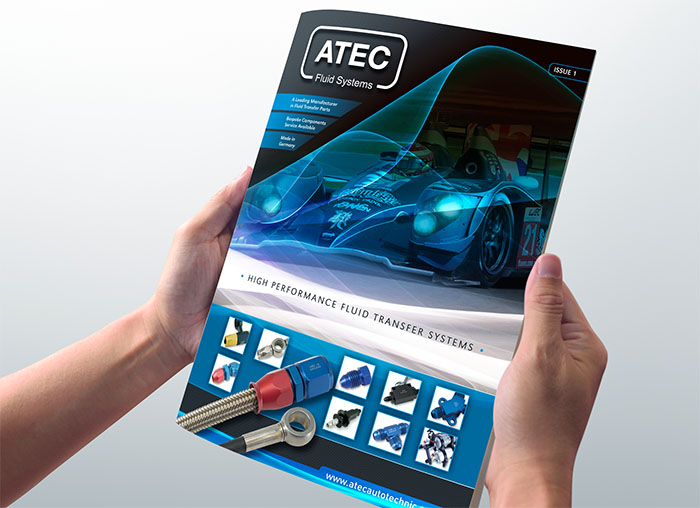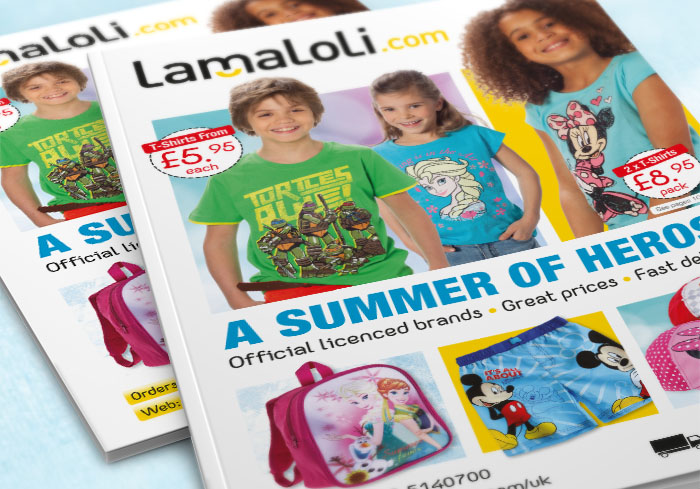Keeping healthy is a good idea and we are constantly bombarded with great reasons to take care of our health. From diet to exercise and checking for any changes in our bodies, we all should take care to ensure we are fit and healthy. But unless we are particularly driven, or have a health scare, we tend to ‘carry on regardless’. Rarely do we sit down and systematically review our health and lifestyle – unless we are prompted.
It’s the same with catalogues, so long as they appear to be working there appears to be very little reason to carry out a review. But, just as with our personal health, things can creep up on a business and bring nasty surprises.
We live in a multi-channel sales and marketing world and catalogues are a very important and powerful part of this mix.
Your catalogue is both a sales AND marketing tool. It is the most intrusive tool you have to engage you customers. It puts your brand in front of customers in a very unique way. It engages far more senses than online communications and as such cultivates a unique customer relationship.
1) Brand
This is much more than a logo – it is who you are as a business. It is the one thing than absolutely differentiates you from your competitors. Every company has a brand by default, and its how it is managed that makes all the difference. A brand can make the difference between making a sale or not. It takes time to build and can be destroyed very quickly.
When a catalogue lands on a desk or doormat, your brand has to be communicated immediately. Your cover has to work hard to engage the reader enough to get them to open the catalogue. Once inside, the feel of the catalogue should reflect what the cover branding has defined.
Checklist:
- Review your brand and its values and ensure it is reflected in your catalogues.
- Although the logo is only one part of your brand it’s always good to review and update. Even the best brands do this, but evolution is better than revolution.
- Ensure your branding matches the personality of your business. Does it tell your story and reflect your values?
- Make sure your branding is consistent across all channels.
2) Looks
First impressions count! There has always been a saying in catalogue and direct marketing ‘you get the customers you deserve’. You have to get the look and feel that is appropriate for your intended audience. If you have a cheap and cheerful brand the presentation must reflect this, the design language, layout colour pallet must come together with a cohesive message. Equally, if it’s a premium product appealing to a premium market the approach will be entirely different. Remember a catalogue is the sum of its parts – each one has to make a positive contribution. The first interaction thecustomer has with a catalogue is its cover. It generally takes about 5 seconds to decide whether to open the catalogue. It’s an incredibly short time, make sure you maximise it!
Checklist:
- Make covers work hard and reinforce your brand with both imagery and messaging.
- Try and define your catalogue voice and personality, make it obvious.
- Keep your masthead consistent and easily recognizable, make it a beacon for existing customers.
- Don’t forget personalization, it can give a great lift to responses.
3) Creative
More than anything, the creative approach defines a catalogue. Although catalogues are read in clearly defined and predictable ways, they must differentiate themselves creatively. Much research has been undertaken on how catalogues are read and deciphered. Key eyeflow studies gave excellent insights into how a reader’s journey can be influenced by employing best practise. By placing products in key hotspots you can lift sales considerably. But all this must be done whilst keeping your brand promise in mind. Creative isn’t just design and layout – it also includes photography and copy. All creative elements should integrate cohesively and consistently.
Checklist:
- Develop a creative approach that is instantly owned by your brand.
- Ensure the creative approach is applied consistently across all channels, including social.
- Apply best practise to catalogue creative and don’t reinvent the wheel. Catalogues work in predictable ways.
- Don’t over design spreads, keep things simple but well structured. The quickest way to get a reader to skip a spread is to make it ‘busy’.
4) Calls to action
Catalogues are a very intrusive vehicle with which to contact your customers. They don’t need permission or action by the recipient, they just crash through the letter box. They can’t be deleted, skipped over or diverted to the spam folder – they arrive with all guns blazing. If you have got the proposition right and delivered to the right audience then you should get a response. But increasingly that response is a call to action. A catalogue has the power to engage with new audiences and invite them to a party they never knew existed. Why would you look on the web for a product or brand you had never heard of? This is one of the big plus points of catalogues and they are great at delivering calls to action, be it a web address, QR code, social site or retail store.
Checklist:
- Include calls to action in all your catalogues.
- Make them strong, simple and unmissable – they are not meant to be passive.
- Use QR codes or codes embedded in pictures to drive readers to other channels.
- Calls to action that take the reader to a web page should be measured by creating a custom landing page.
5) Delivery
A catalogue is the sum of its parts and once created it has to be delivered to customers or prospects. It is unique in that it can be delivered both online and offline. Digital catalogues have their place but can’t match a printed, offline version. But the world of print and mail is constantly changing and it is imperative that production and delivery methods are reviewed. Catalogue print is a complex mix of ink and paper and new technology has greatly increased choices. If we include mailing options, we are now offered a plethora of ways we can make and mail a catalogue.
Checklist:
- Make sure your catalogue format suits your chosen printer’s presses – it’s a changing world.
- Paper is a world of its own and regular review of weights and finishes is imperative – huge savings can be made.
- Postal rates are extremely competitive and new initiatives by Royal Mail and down stream access companies make it imperative to check if you are getting the best deal.
- Data is the other key element – it’s a hugely valuable part of your business. Have it checked annually – B2B lists degrade by around 30% a year.


